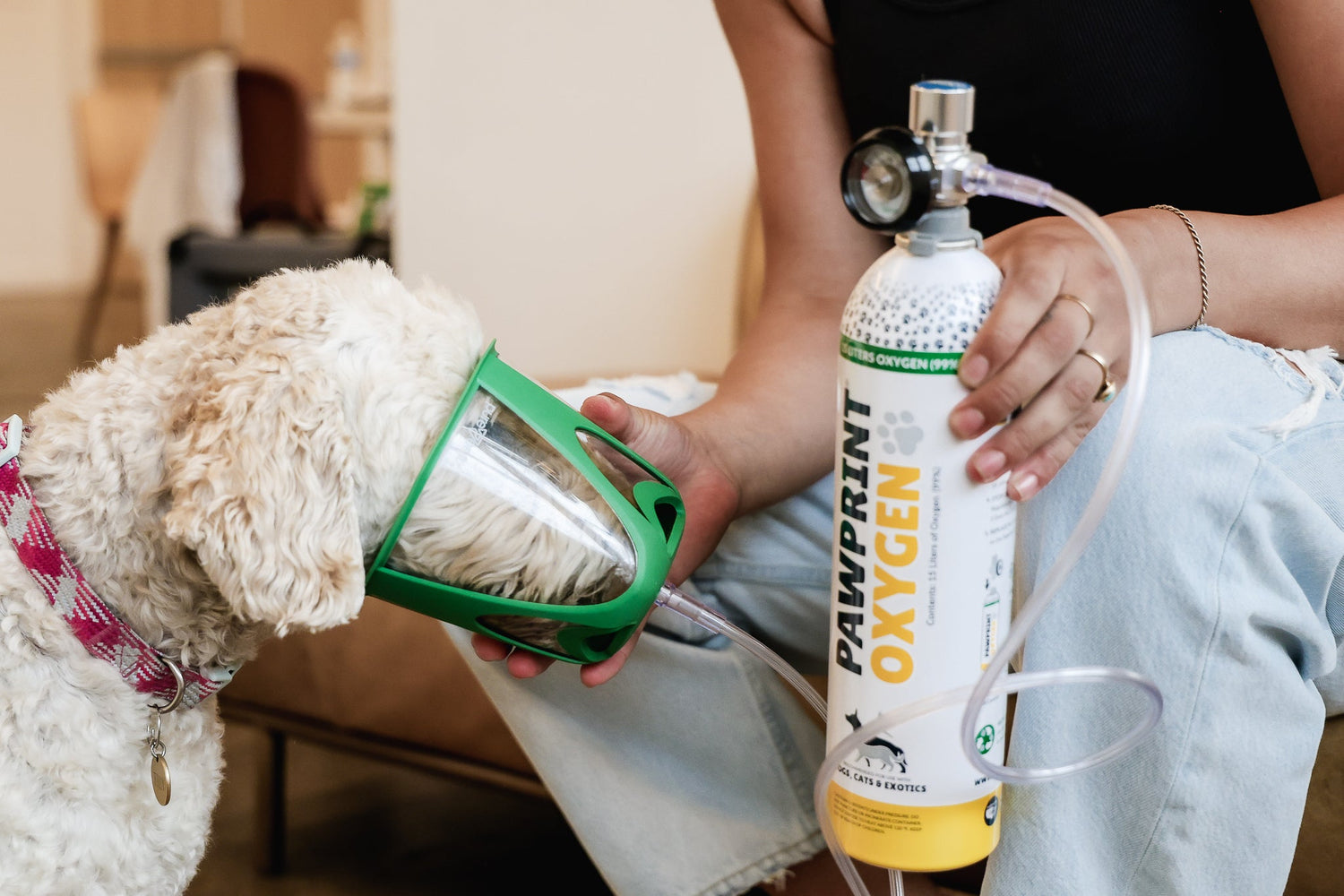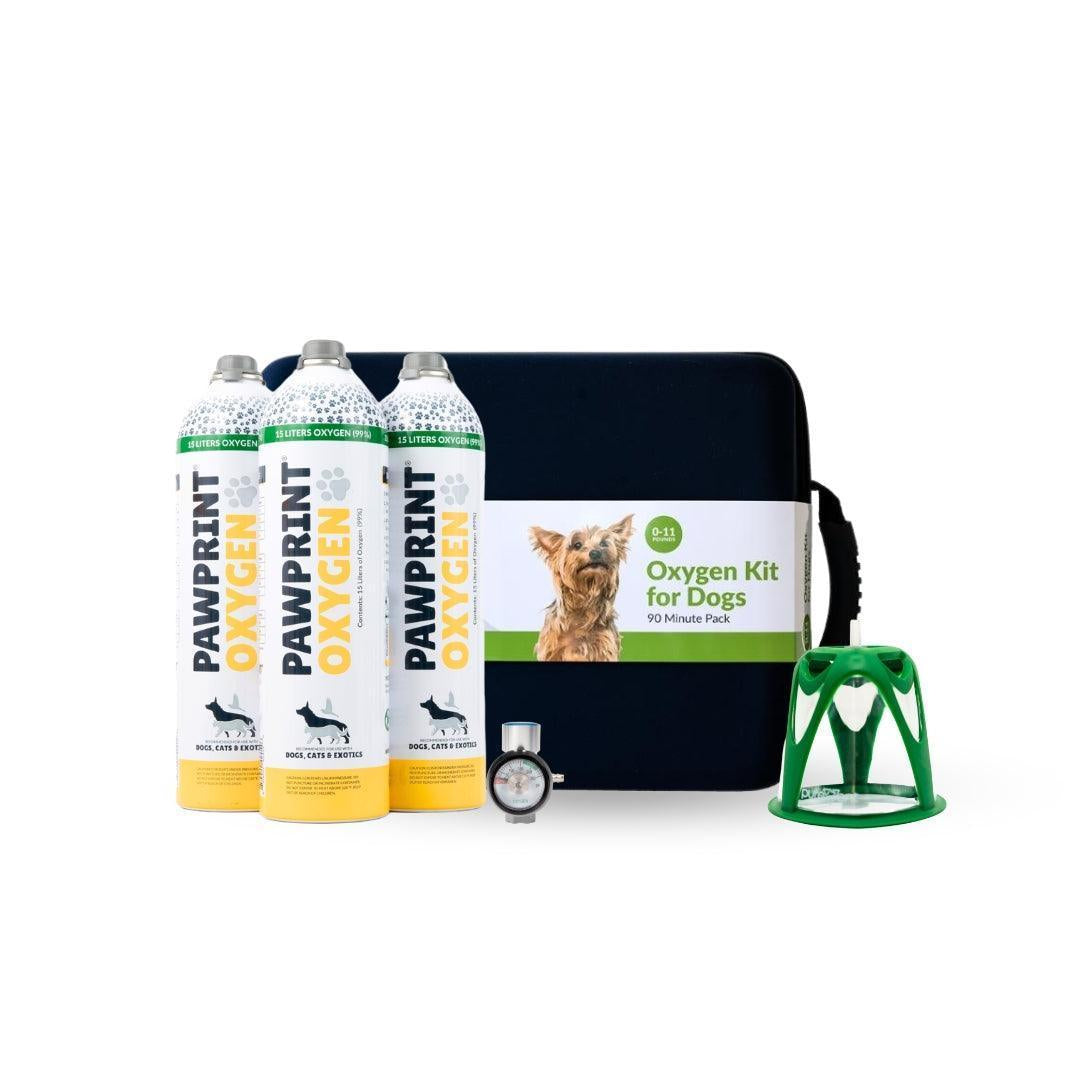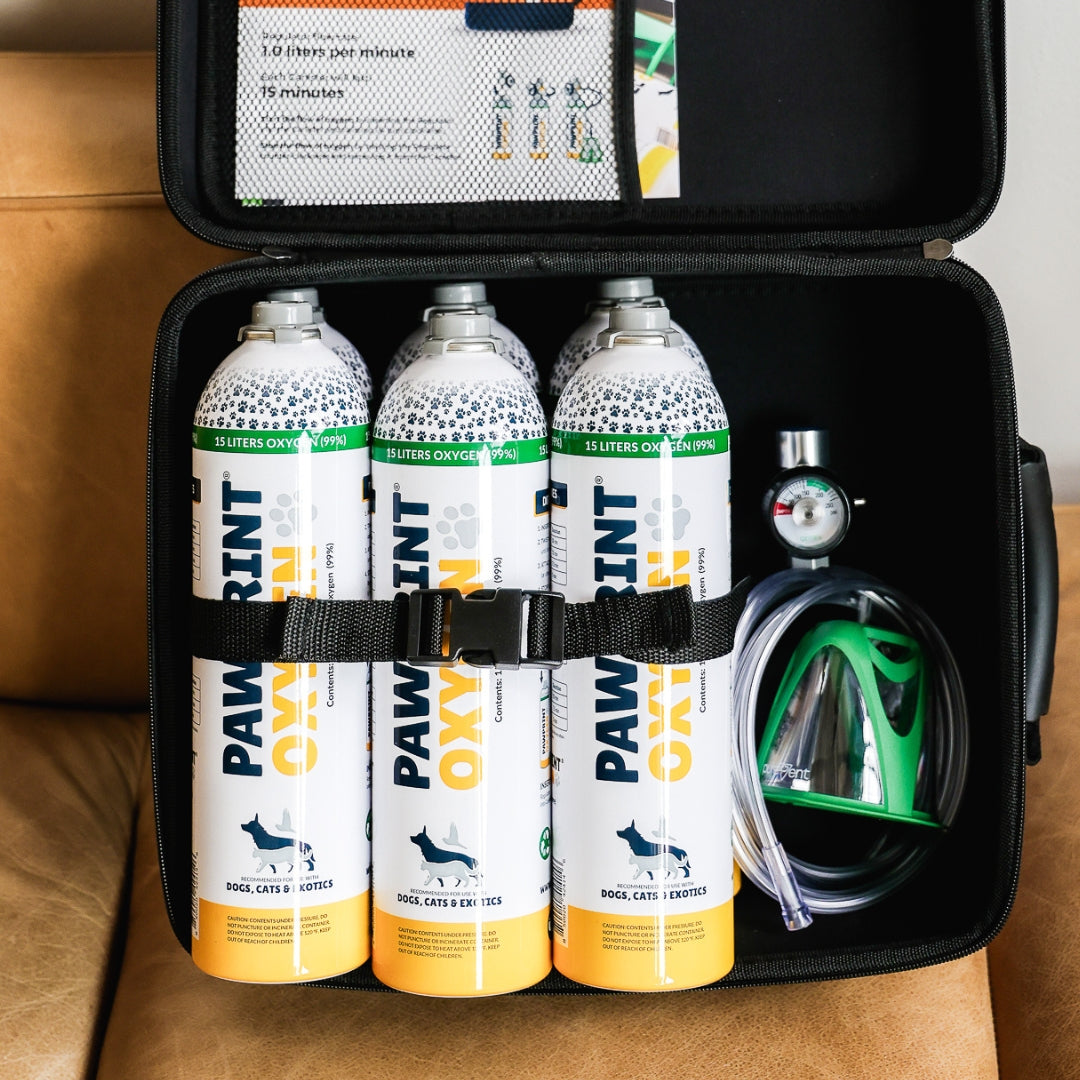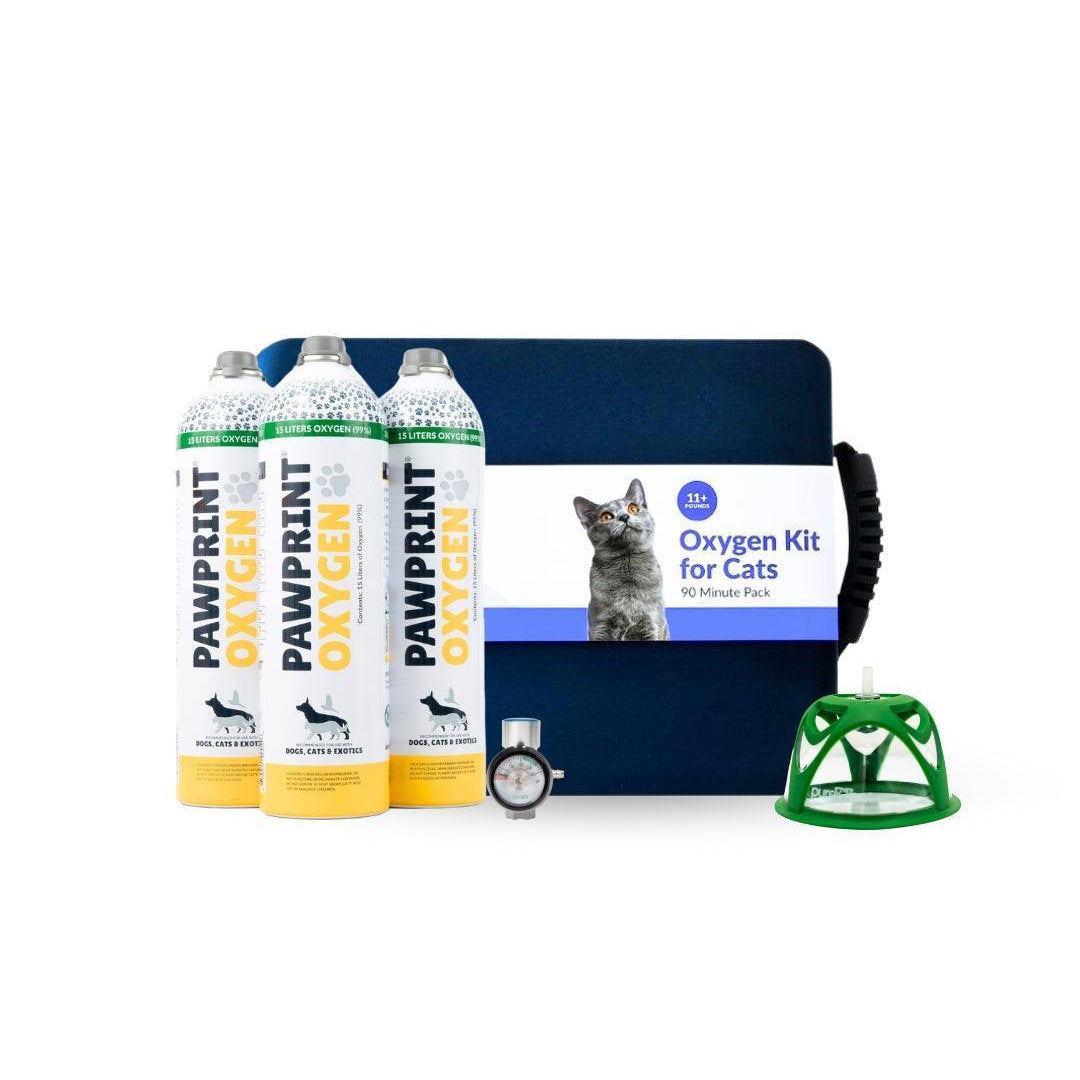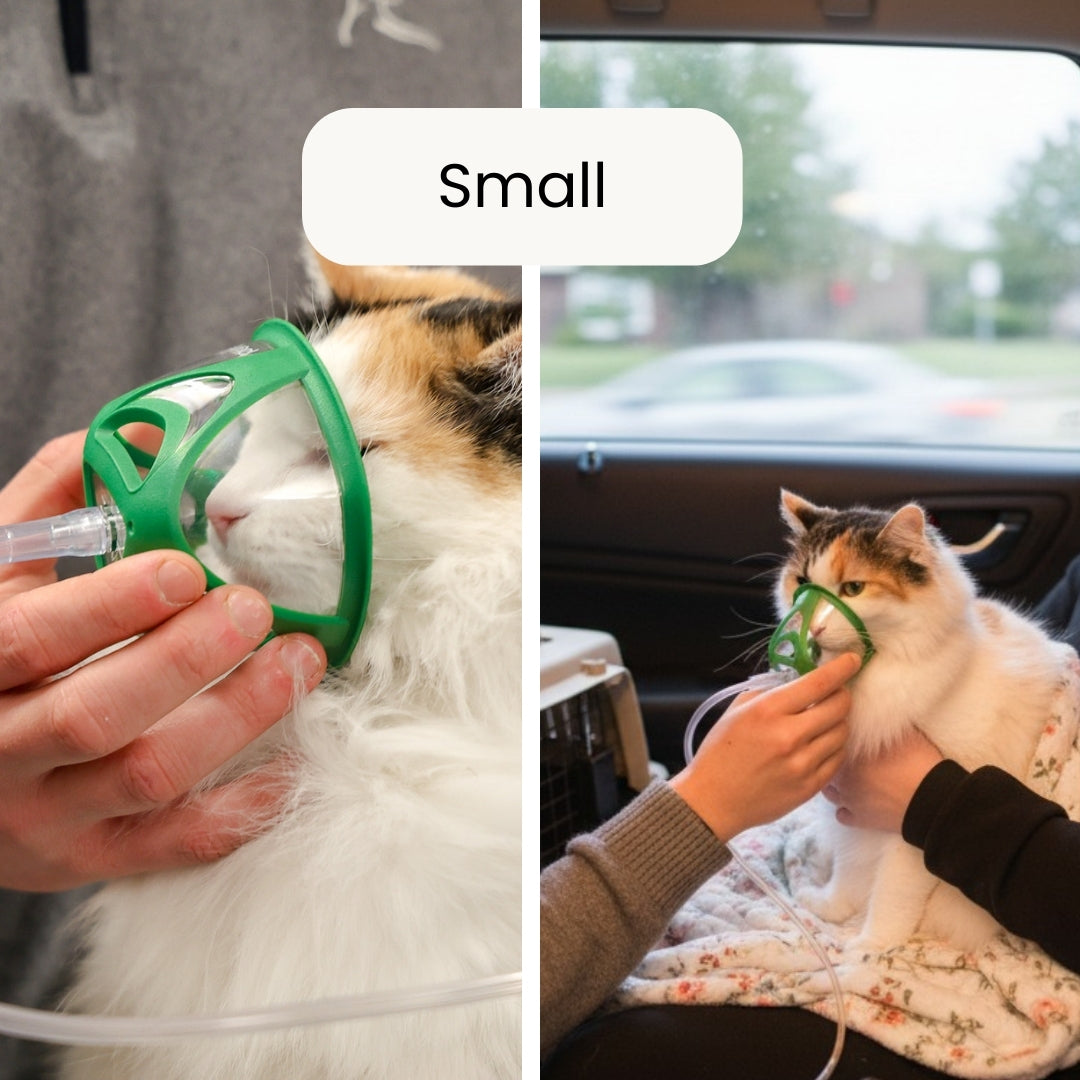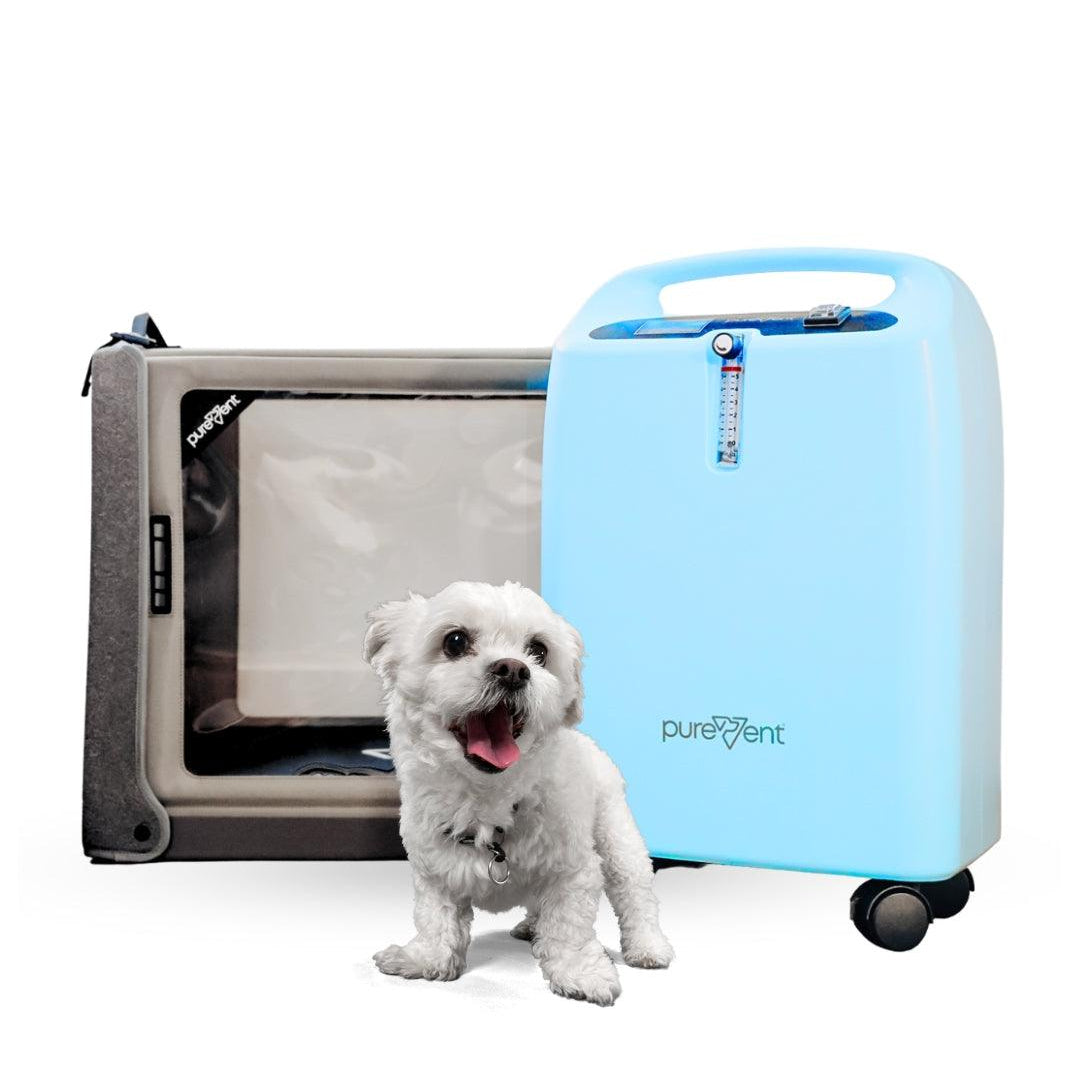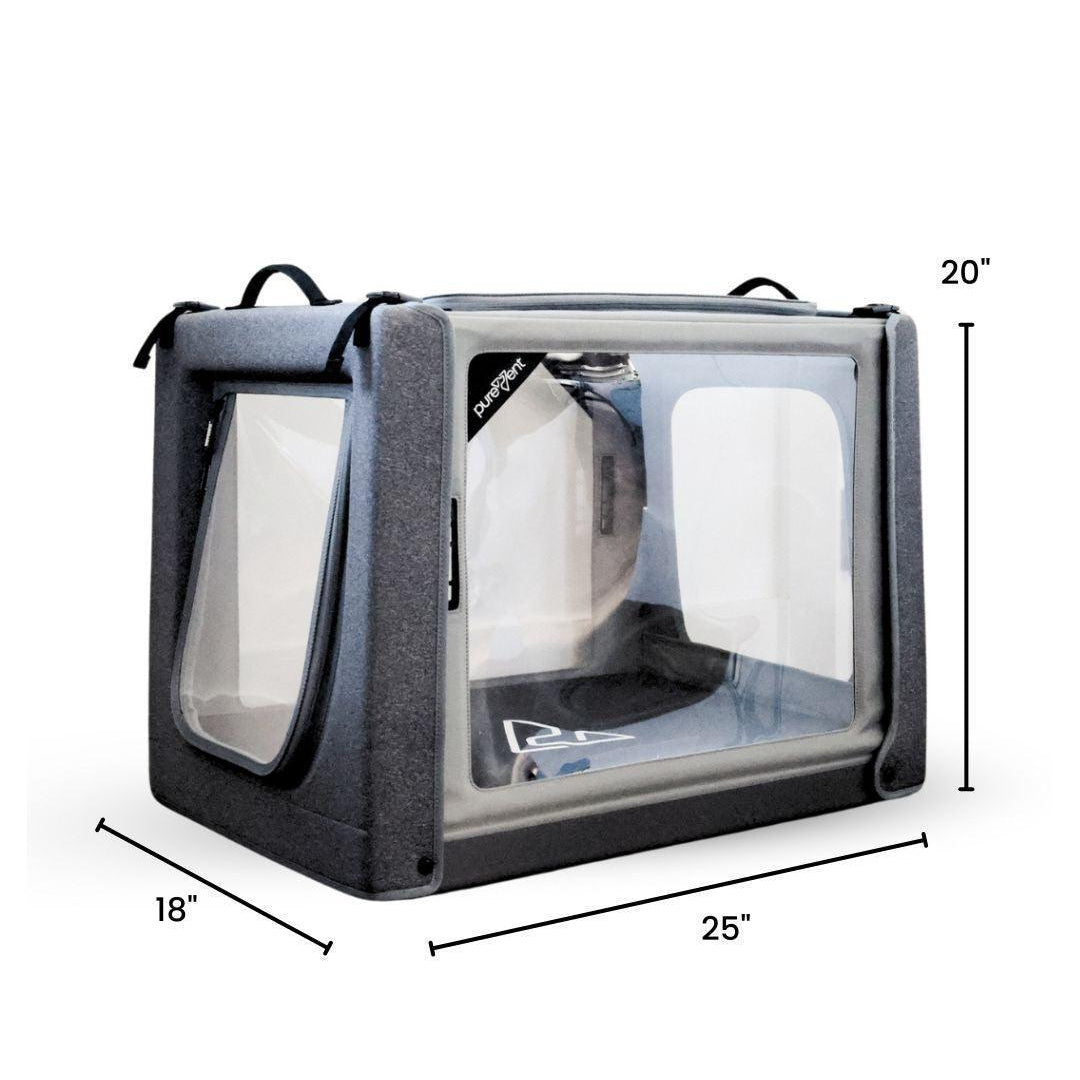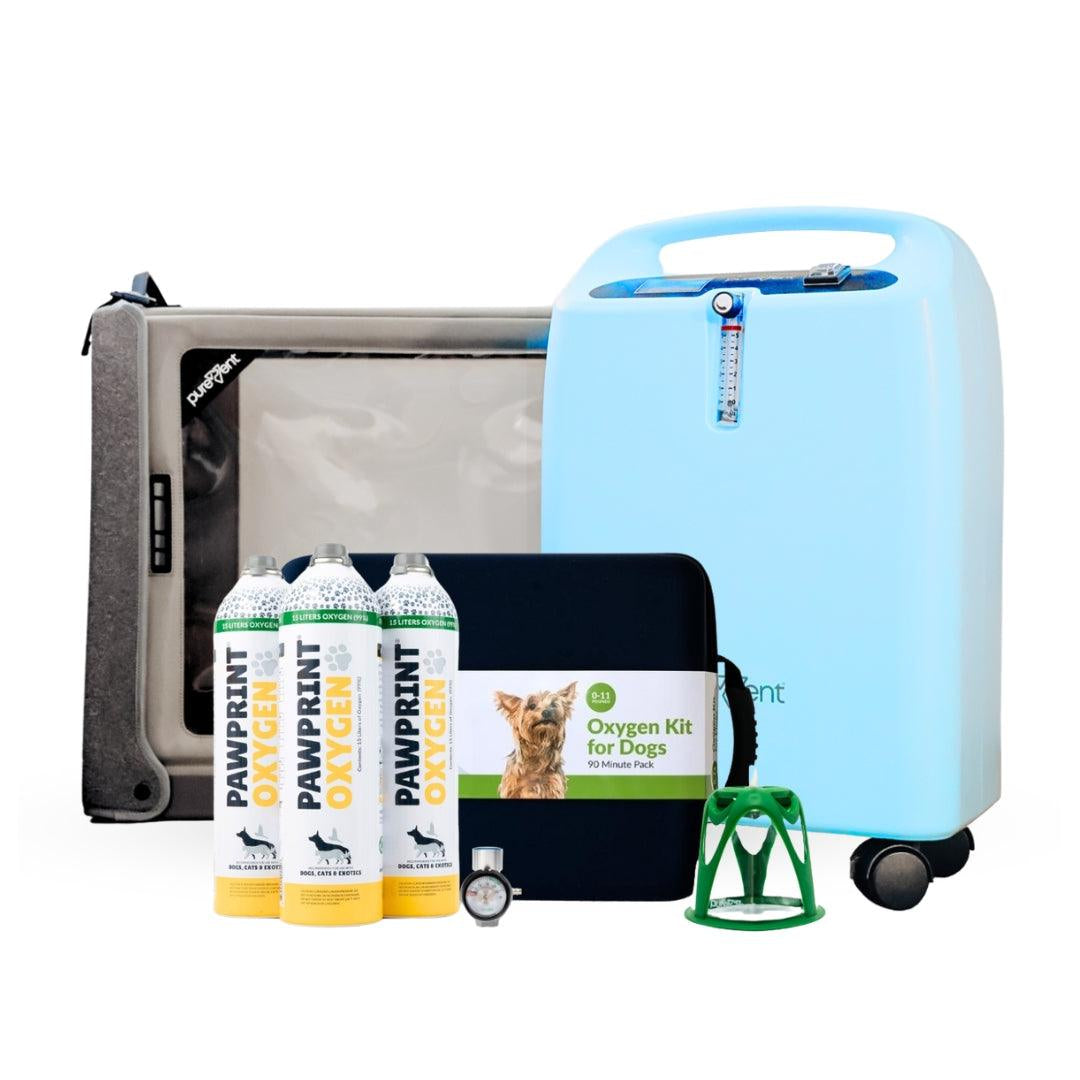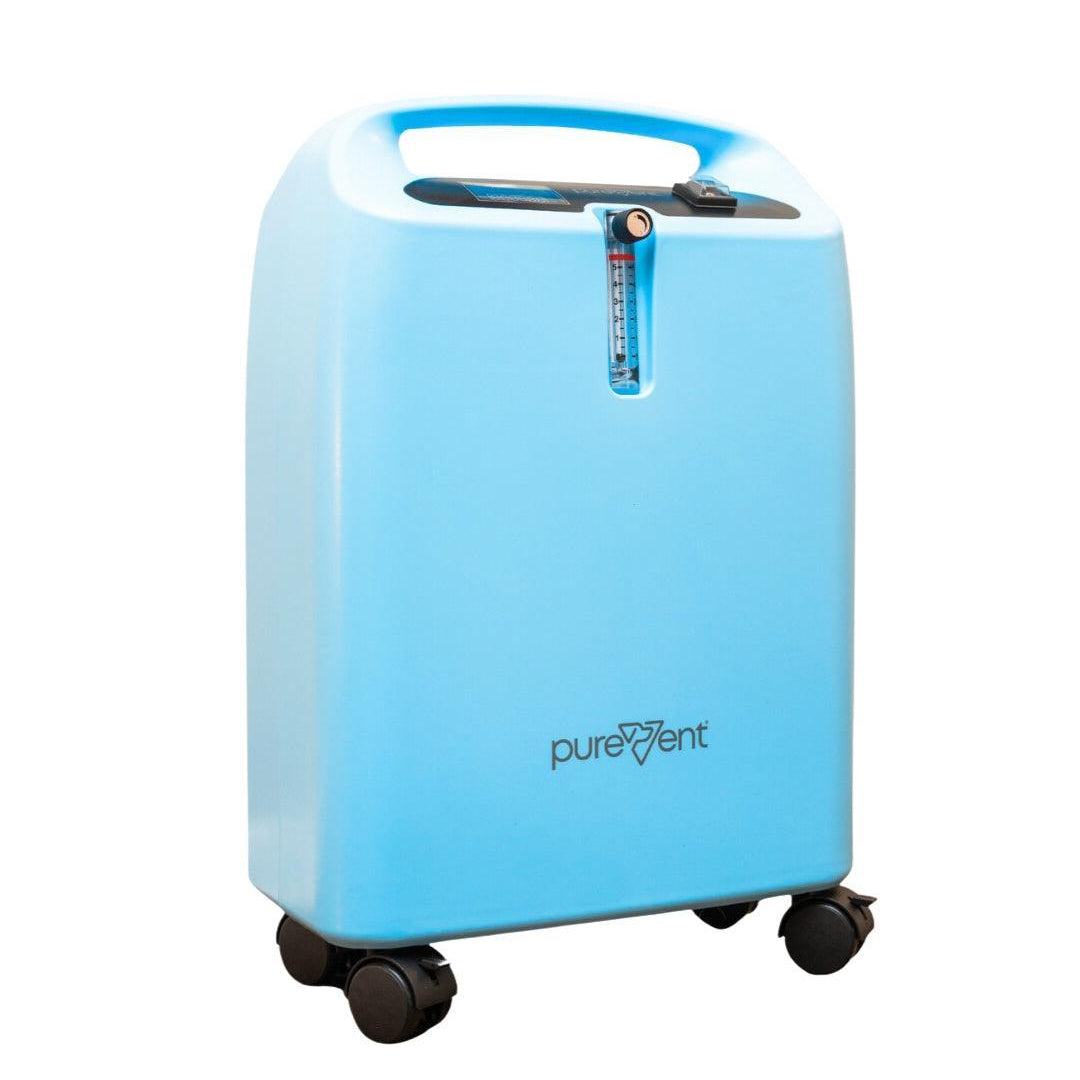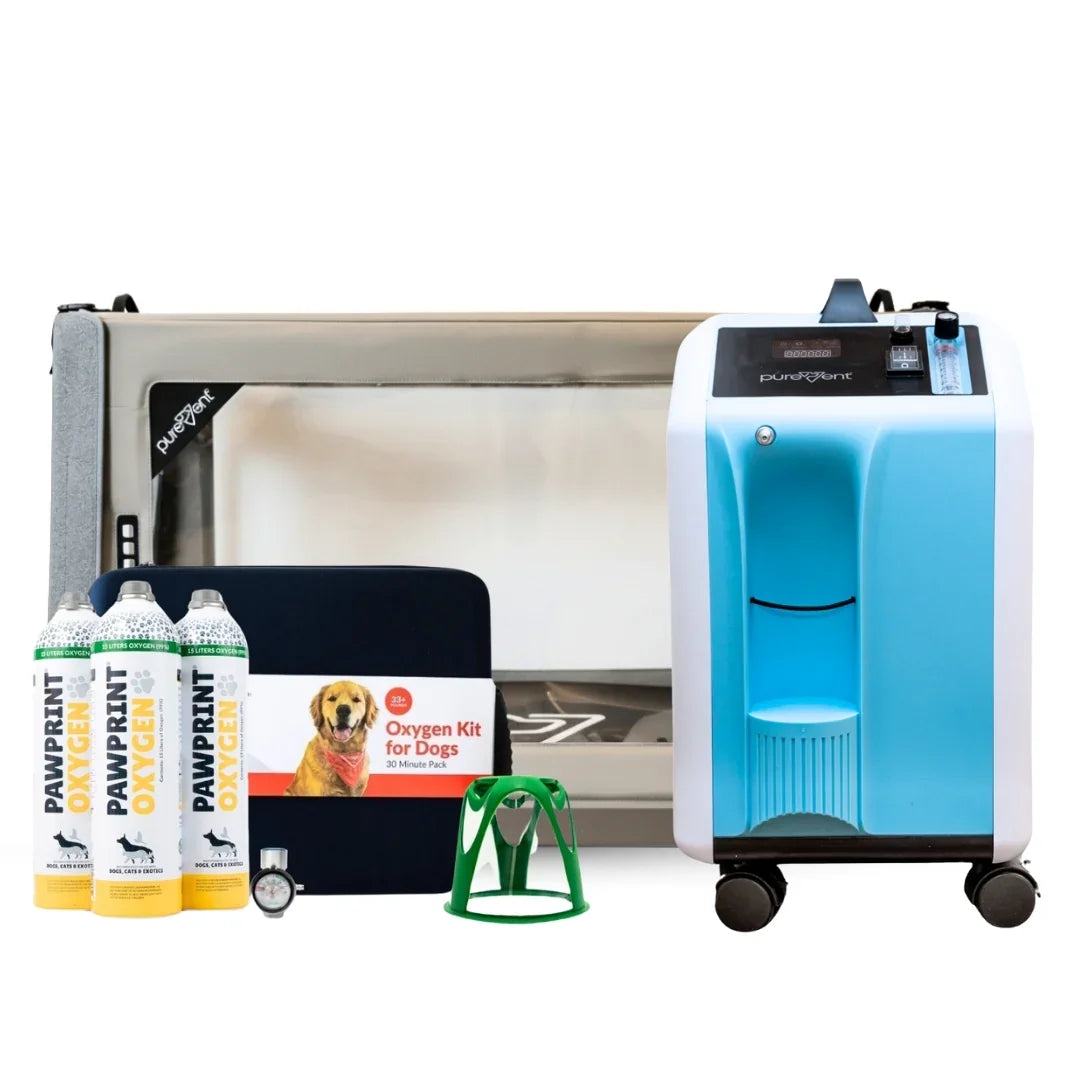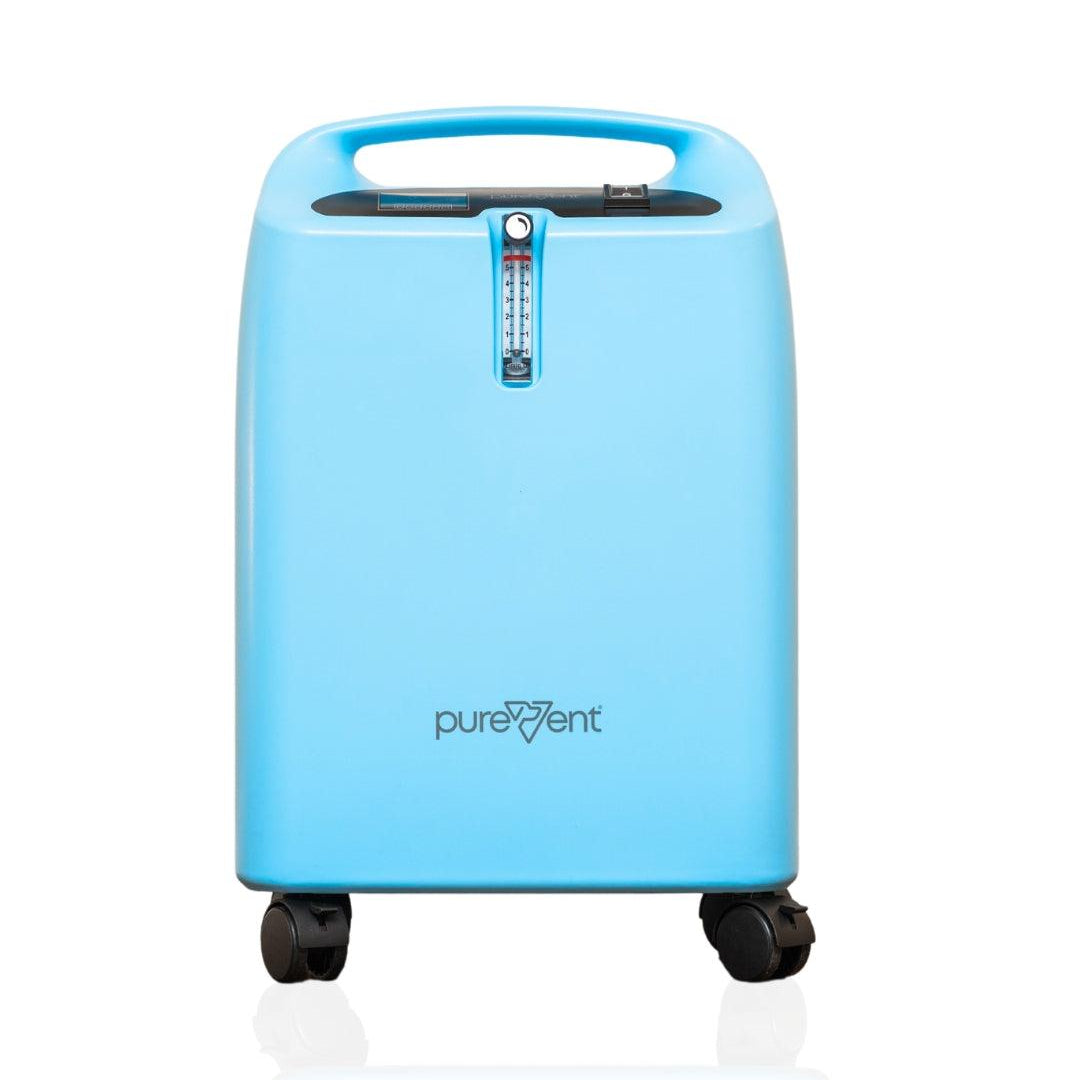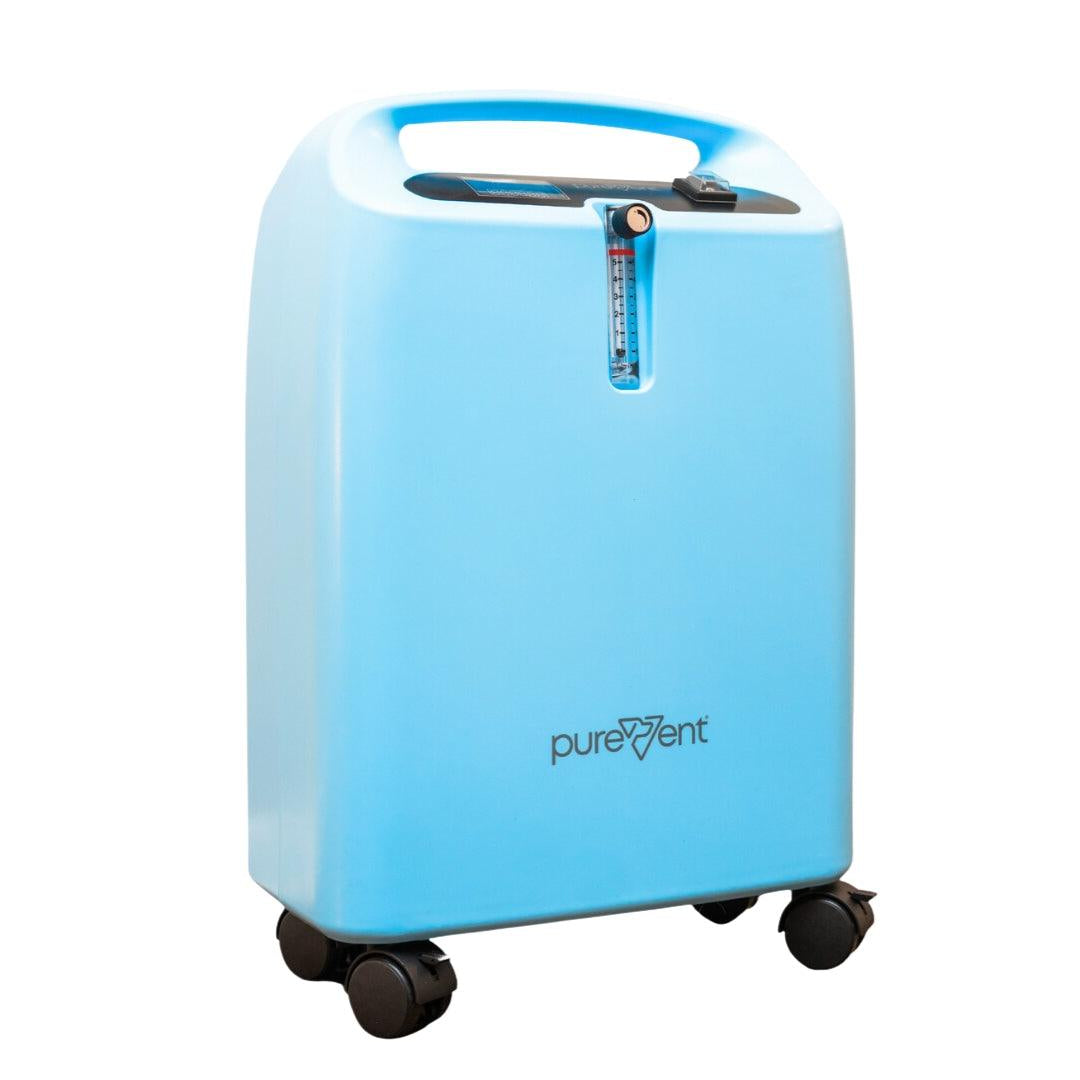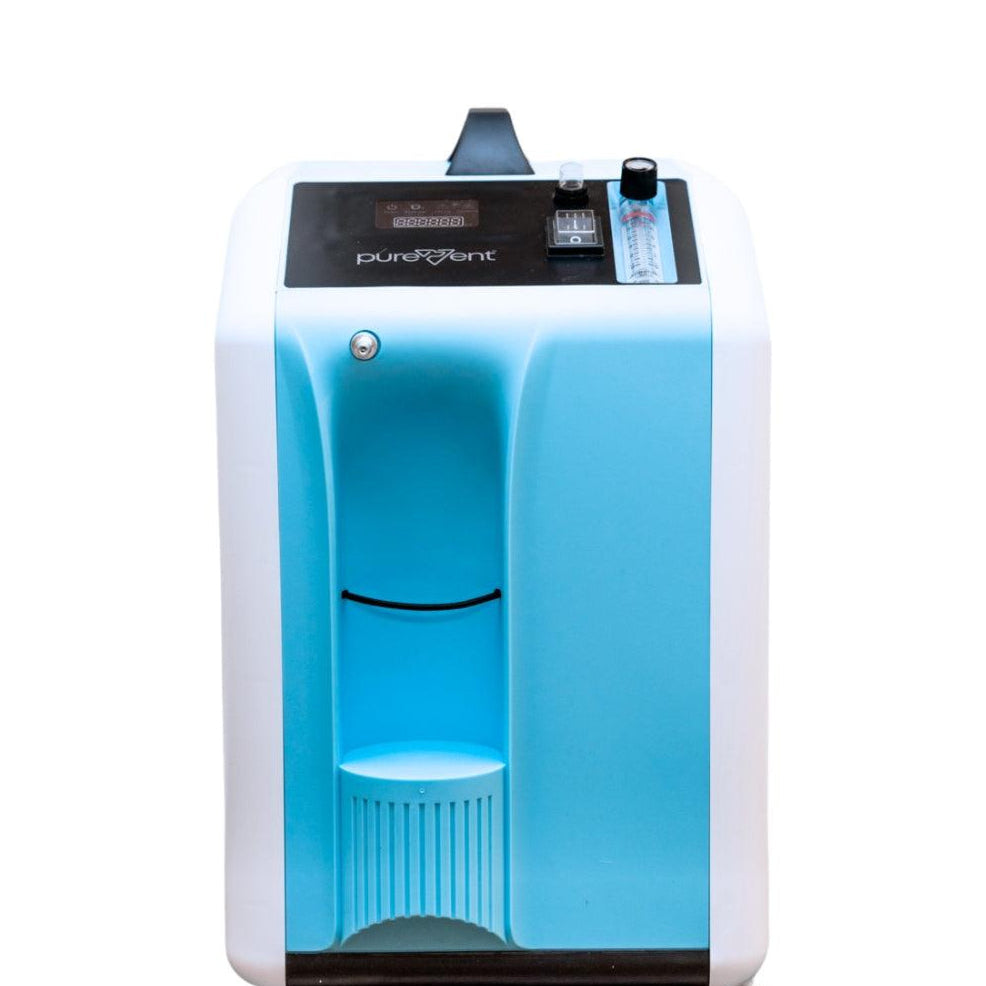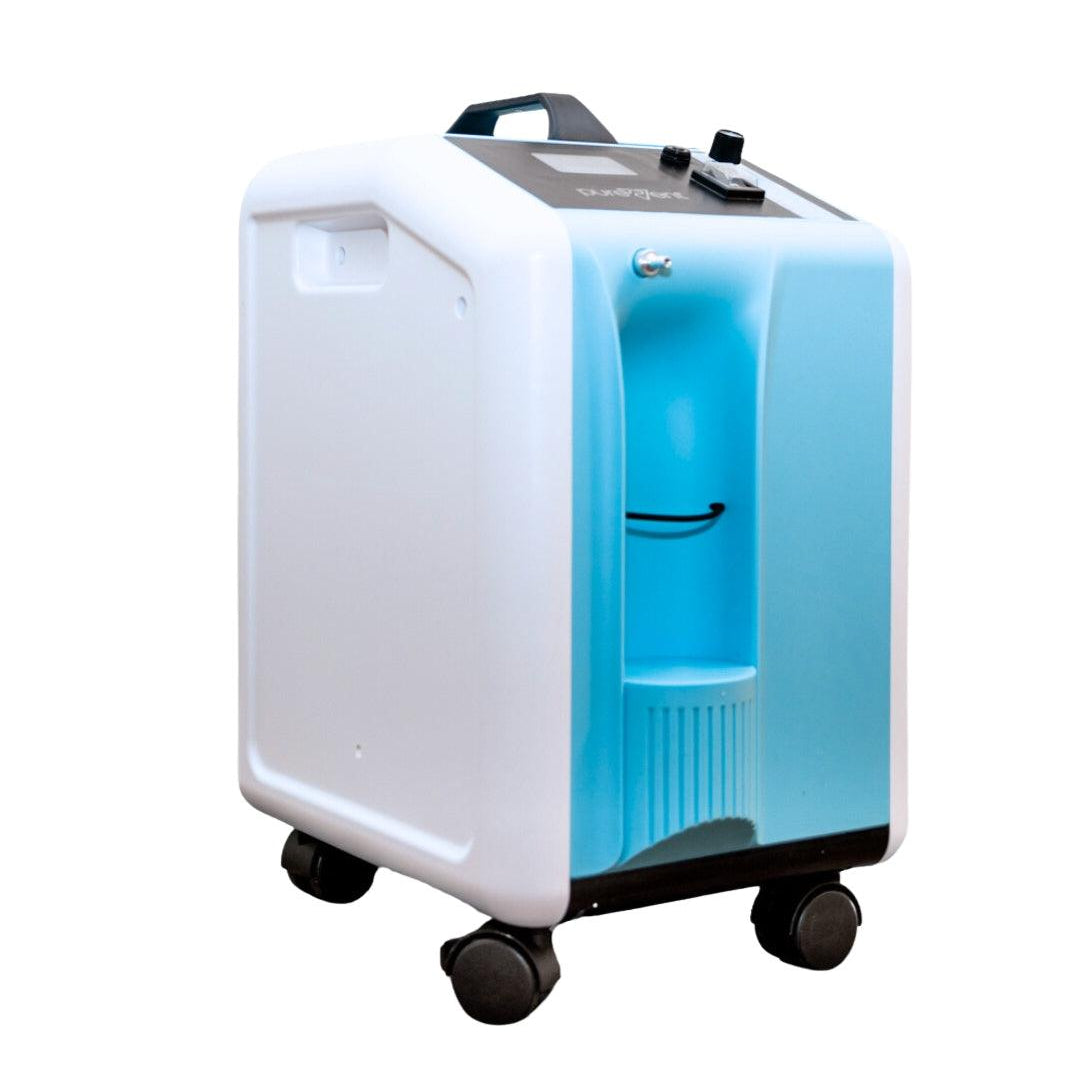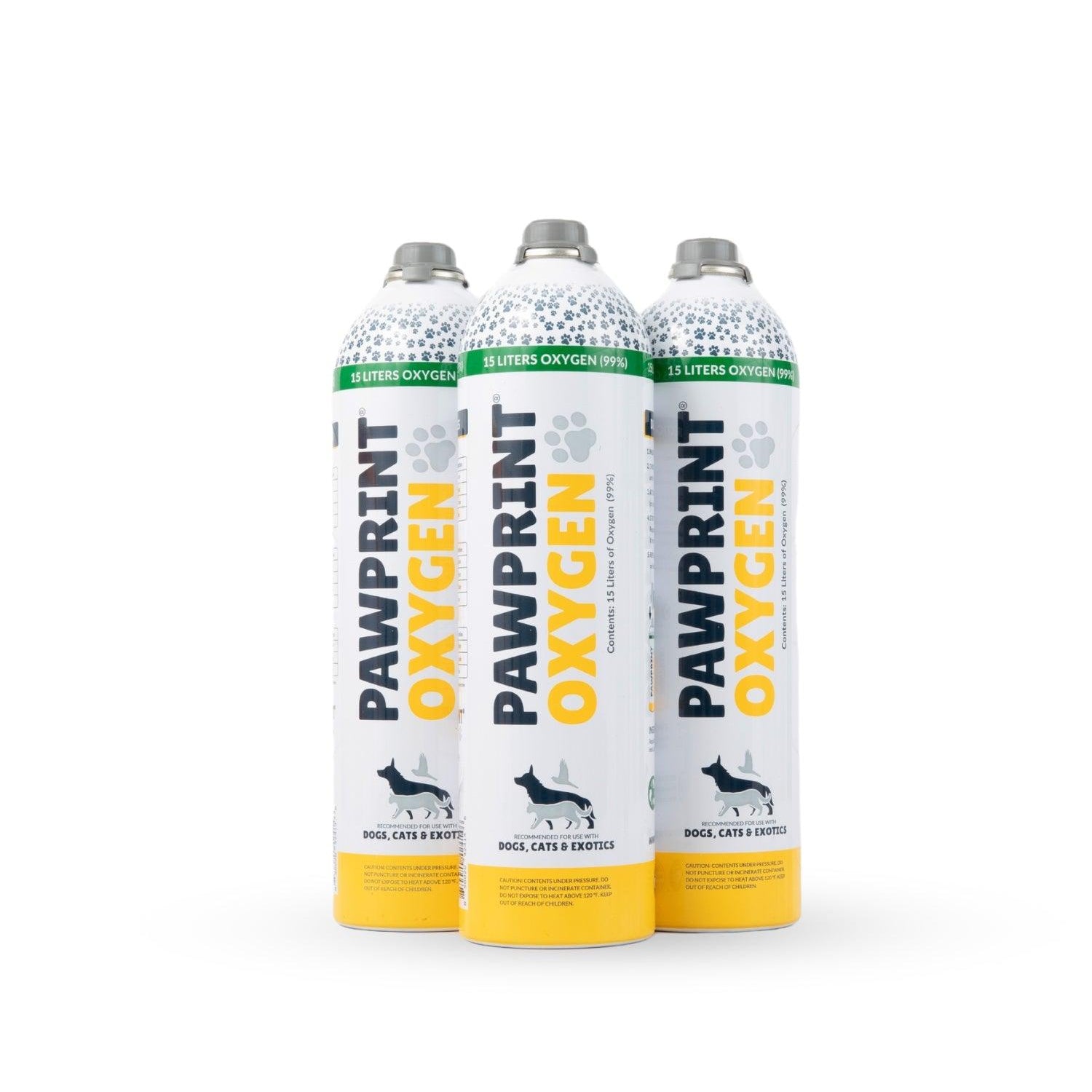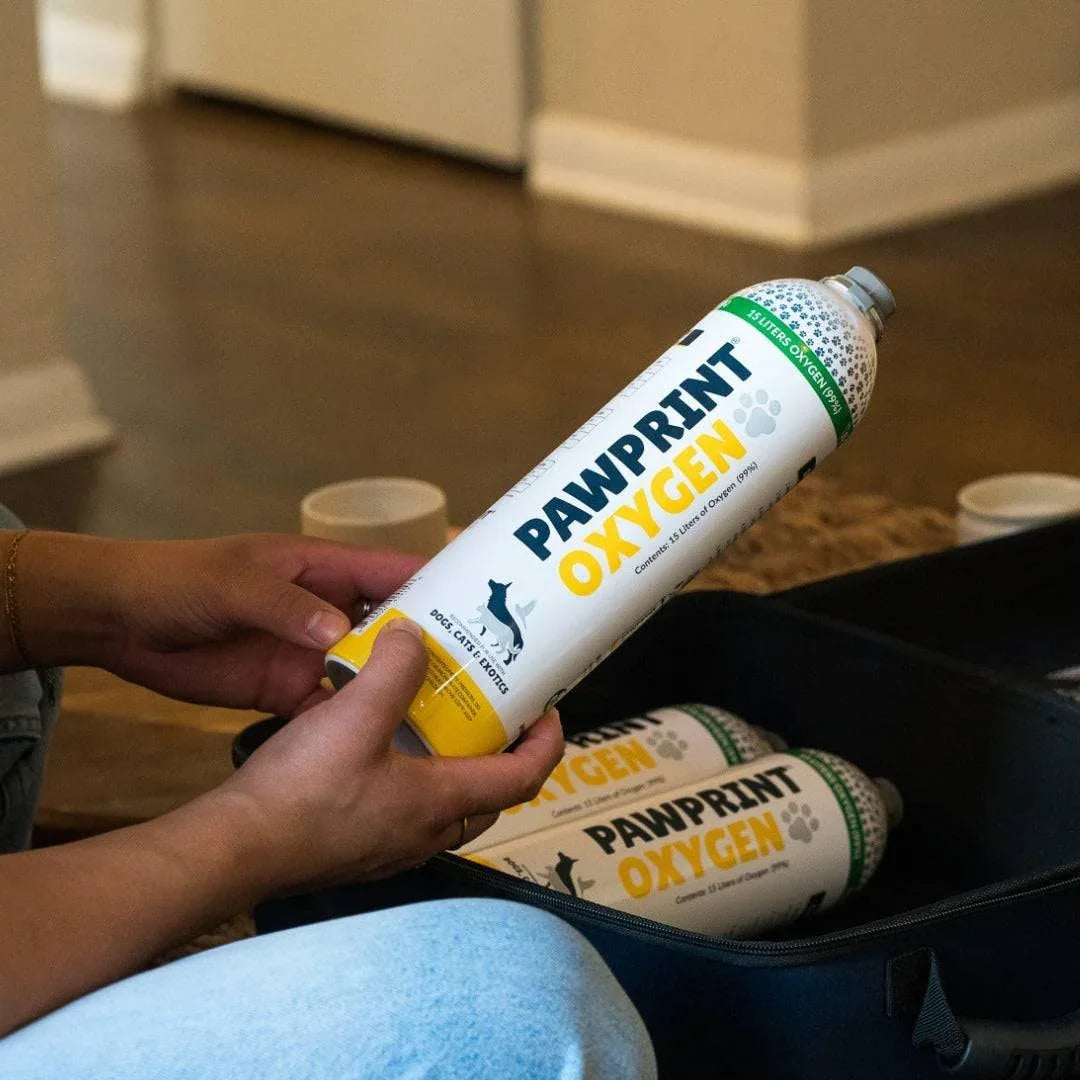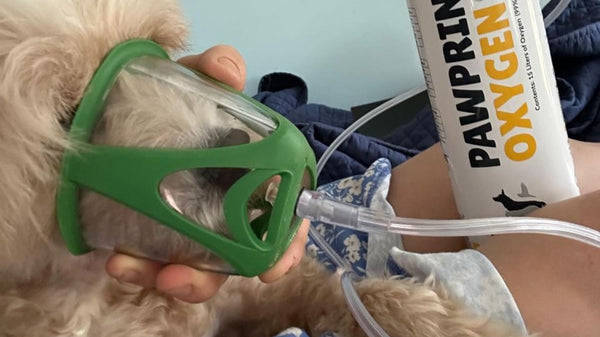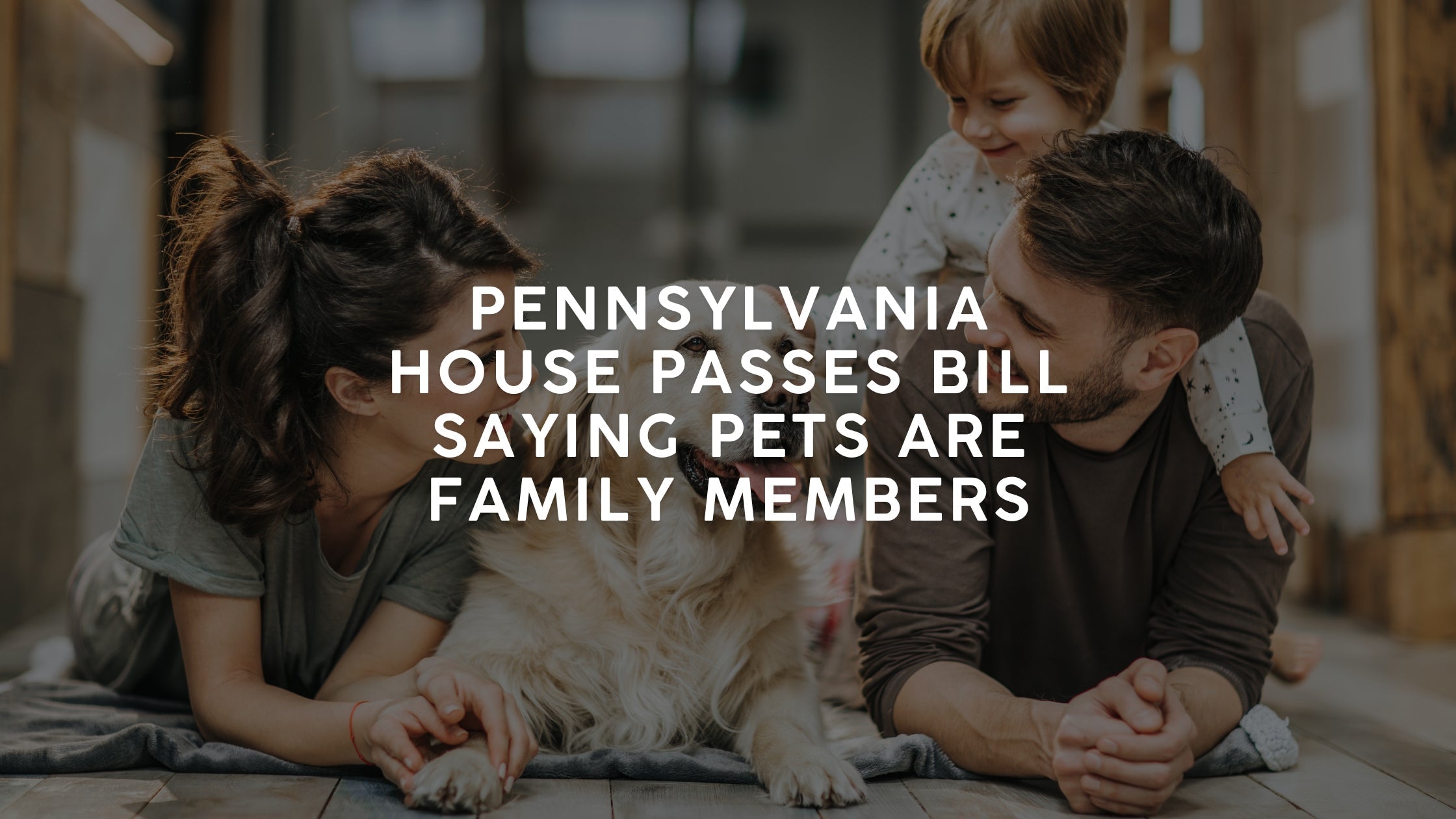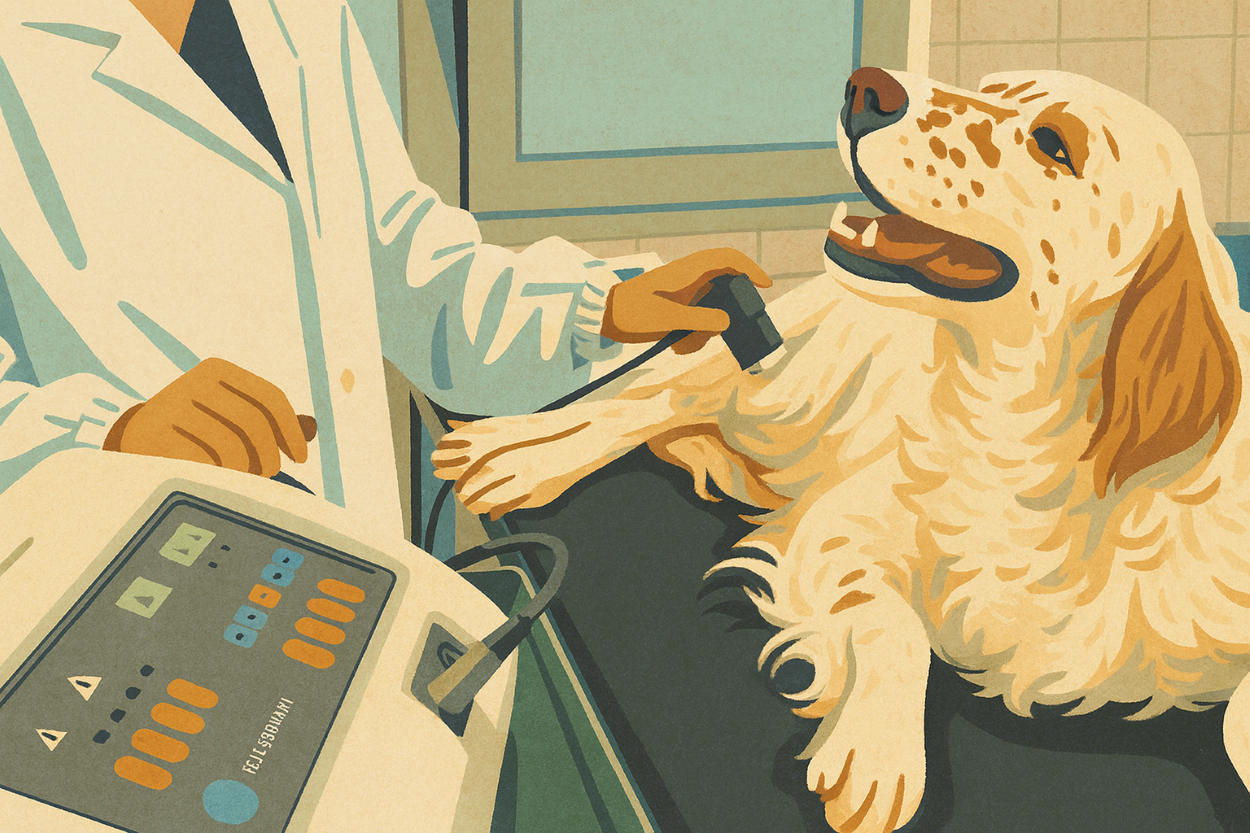Veterinarians determine the proper oxygen flow rate for dogs and cats by monitoring vital signs such as respiratory rate, oxygen saturation (ideally 94–98%), pulse oximeter readings, breathing patterns, heart rate, and overall distress. Pawprint Oxygen simplifies this process with Portable Oxygen Kits that are pre-set to a weight-based flow rate, and may include extra canisters for extended use and peace of mind. These kits ensure pet owners can deliver safe, effective oxygen therapy at home or during transport without needing to calculate dosage in the moment.
Table of Contents
When your pet is in distress, the last thing you want to do is concern yourself with calculating your pet's oxygen levels and flow rate needs. In the heat of the moment, we want you to be prepared and well-versed in your pet's oxygen needs. This article will dive into exactly how your veterinarian, and thus Pawprint Oxygen, determines your pet's needs to provide you with the most suitable products and the correct flow rates for oxygen therapy.

How Do Veterinarians Determine the Oxygen Flow Rate for Dogs and Cats?
Veterinarians determine the proper oxygen flow rate by monitoring several key health indicators to ensure pets receive safe, effective support. They often use a pulse oximeter and may adjust flow based on additional observations or diagnostic tests.
Factors veterinarians consider include:
Respiratory rate and oxygen saturation levels (ideally 94–98%)
Pulse oximeter readings from the tongue, ear, or paw
Breathing patterns, heart rate, blood pressure, and signs of distress
Additional diagnostics, such as an MRI, CT scan, EKG, or ultrasound, if needed
Can I refill my canister after use?
Oxygen canisters cannot be refilled. Please recycle your empty canisters. You can reorder canisters at any time!
What Is The Shelf Life On The Oxygen Canisters?
We have a two-year shelf life on our Oxygen Canisters. This shelf life is for the seal on the Oxygen Canister itself, not the oxygen.
Store canisters in a cool, dry place and if the seal is not tampered with, the oxygen will stay in the canister.
How long does each oxygen canister last?
Pawprint Oxygen Canisters can last up to 30 minutes. How long the canisters last is dependent on the flow rate that you’re using.
The flow rate is the “dosage” of the oxygen drug and determines the rate at which the oxygen gas leaves the canister.
Your Portable Oxygen Kit will include a regulator that is pre-set to the flow rate dictated by the weight range best for your pet. If you did not purchase a kit, and need a regulator, they can be purchased separately.
These are the durations that the canister will last for each of the flow rates:
0.5 Liters per minute: 30 minutes
1.0 Liters per minute: 15 minutes
2.0 Liters per minute: 7.5 minutes
3.0 Liters per minute: 5 minutes
Pawprint Oxygen Rescue Kits
Portable Oxygen Kits are designed for easy use at home or during transport to your veterinarian. Each kit is tailored to your pet’s weight and includes a pre-set flow rate regulator, a properly sized oxygen mask, and the recommended number of canisters. Pet parents can also order extra canisters for added preparedness, ensuring they always have the right supply on hand.
What Is a Good Oxygen Saturation Level for My Pet?
A healthy oxygen saturation level for pets is generally between 94–98%, meaning most red blood cells are carrying oxygen effectively. Levels below this range can signal respiratory distress or other health issues, and veterinarians may adjust oxygen flow to stabilize the pet. The exact target range can vary depending on factors like age, health conditions, and overall medical status.
Key points to remember:
Normal oxygen saturation: 94–98%
Levels below this may indicate inadequate oxygen or respiratory distress
Veterinarians adjust oxygen flow to return levels to normal

How Can I Tell if My Pet Needs Oxygen?
When a pet becomes hypoxic, or has a low blood-oxygen level, this can indicate a serious medical emergency. Identifying the symptoms and treating your pet can be critical; but how do you know when your pet is low on oxygen in the first place?
Symptoms of Low Blood-Oxygen Levels:
Coughing or gagging
Difficulty breathing
Abnormally rapid breathing
Open-mouth breathing (especially in cats)
Exercise intolerance
Blue or pale gums
Fainting or collapsing
Oxygen Flow Rate Quick Guide
The chart below represents guidelines for oxygen dosage and flow rate. While we provide recommended dosages, we always defer to the presiding veterinarian should they recommend a flow rate that differs from our typical guidelines.
When utilizing the PureVent Pet Oxygen Mask, the standard dosage is 100mL/kg/min as shown in the center chart.

What Is an Oxygen Flow Rate Regulator?
An oxygen flow rate regulator controls the flow of oxygen from a cylinder or concentrator, reducing high pressure to a safe, usable level. It lets the user adjust the flow to meet a patient’s needs, often with a pressure gauge and flow control knob for accuracy. Some models include safety valves to prevent overpressure, and regulators may be designed for clinical or home use depending on the setting.

Recovering From Low Oxygen
Following a respiratory distress episode, one of the most important factors is being prepared for next time. Understanding your pet's oxygen flow rate needs and having a plan in place is pivotal to overcoming future emergencies.
As your pet returns home and begins the road to recovery, it's crucial to provide them with a calm, quiet, and comfortable environment. Additional stress or anxiety caused by other pets or family members within the home can slow the recuperation process. If your veterinarian included medications as part of your pet's discharge, be sure to complete them as instructed in order to avoid a relapse.
By using the above chart to determine your pet's flow rate needs and keeping supplemental oxygen on hand for home or transport use, you can keep yourself prepared for future episodes.

